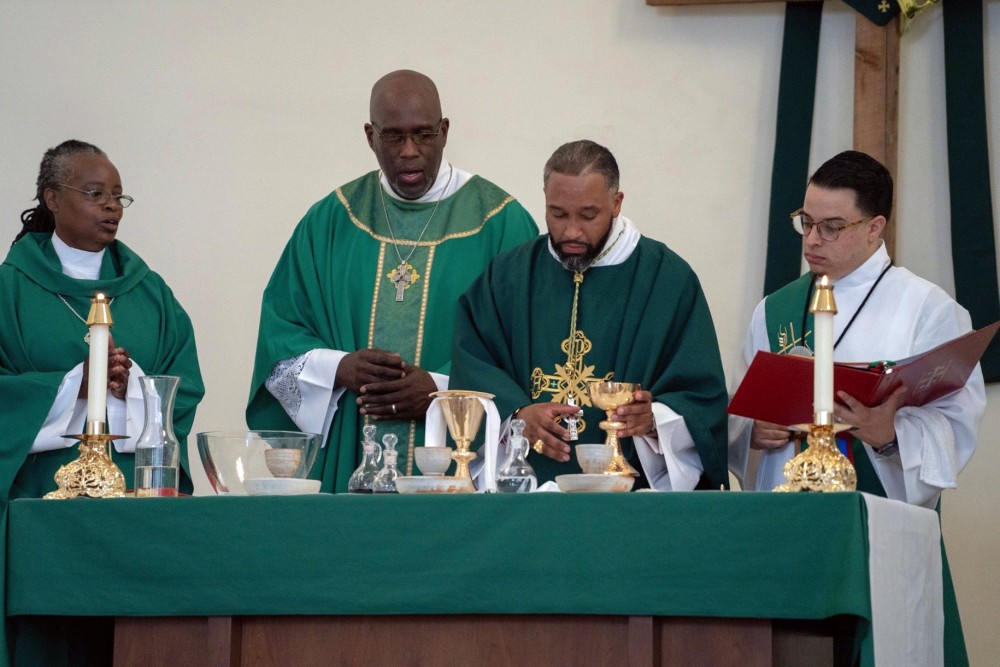Emerging movement suggests young Christians are hungry for liturgy, ritutal

Every service at the Cathedral at the Gathering Place begins with an incense-filled procession of the crucifer and the Gospel, followed by the singing of “Lift Every Voice and Sing,” also known as the black national anthem, before Emilio Alvarez, in full vestments, leads the congregation through the collect, scripture readings, and after the sermon, the Eucharist.
From the ritual smoke to the sharing of the bread, the experience would strike most cradle Pentecostals as utterly foreign. “For the first 15 minutes, you’d think you were in a Roman Catholic church,” said Alvarez. “But when I get up to preach, you’d swear we were Baptist.”
Alvarez’s church in Rochester, New York, is one of roughly two dozen in the Union of Charismatic Orthodox Churches, a five-year-old group of mostly black Pentecostal churches in the Northeast and Australia dedicated to recovering the classical spirituality and theology of the early church mothers and fathers.





